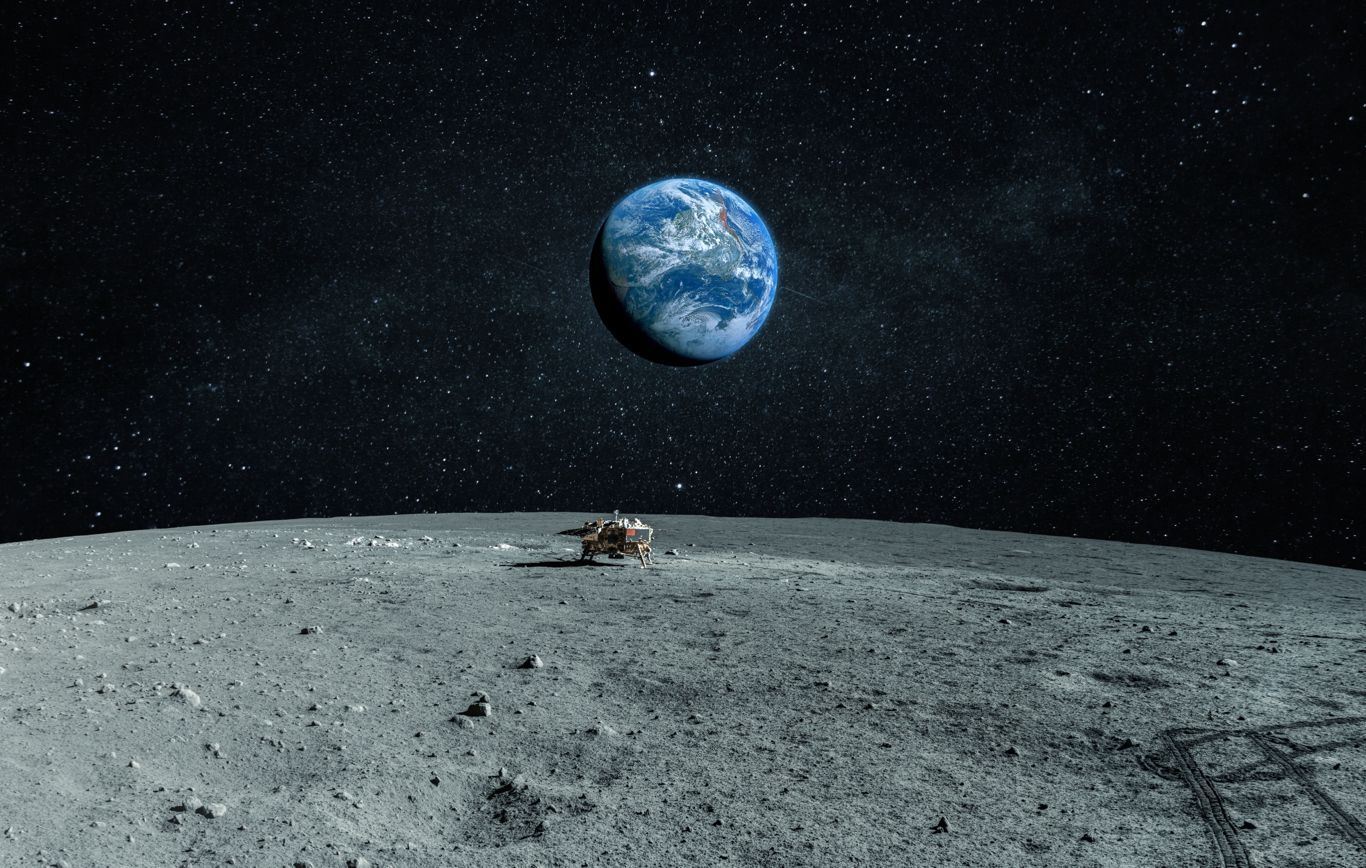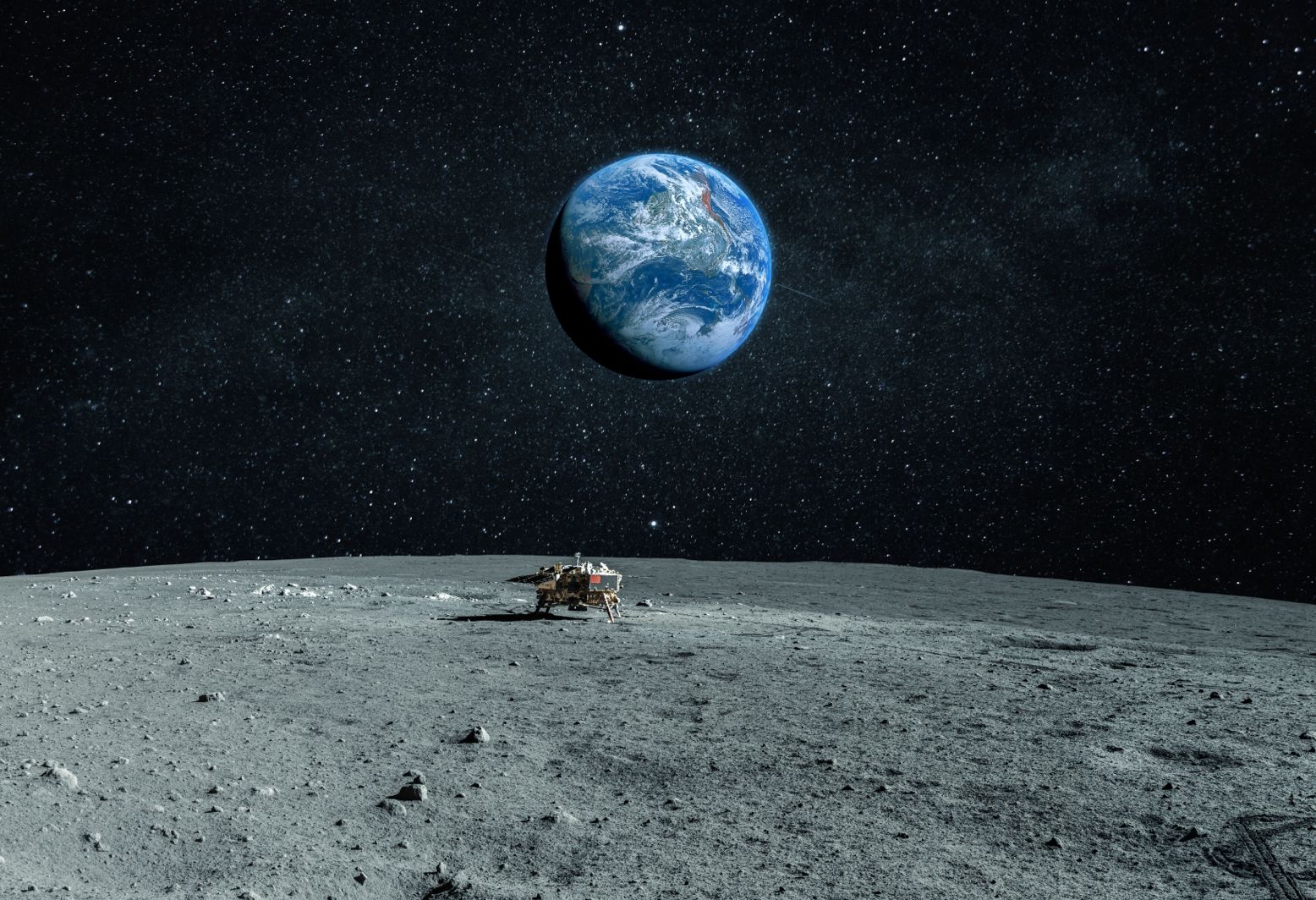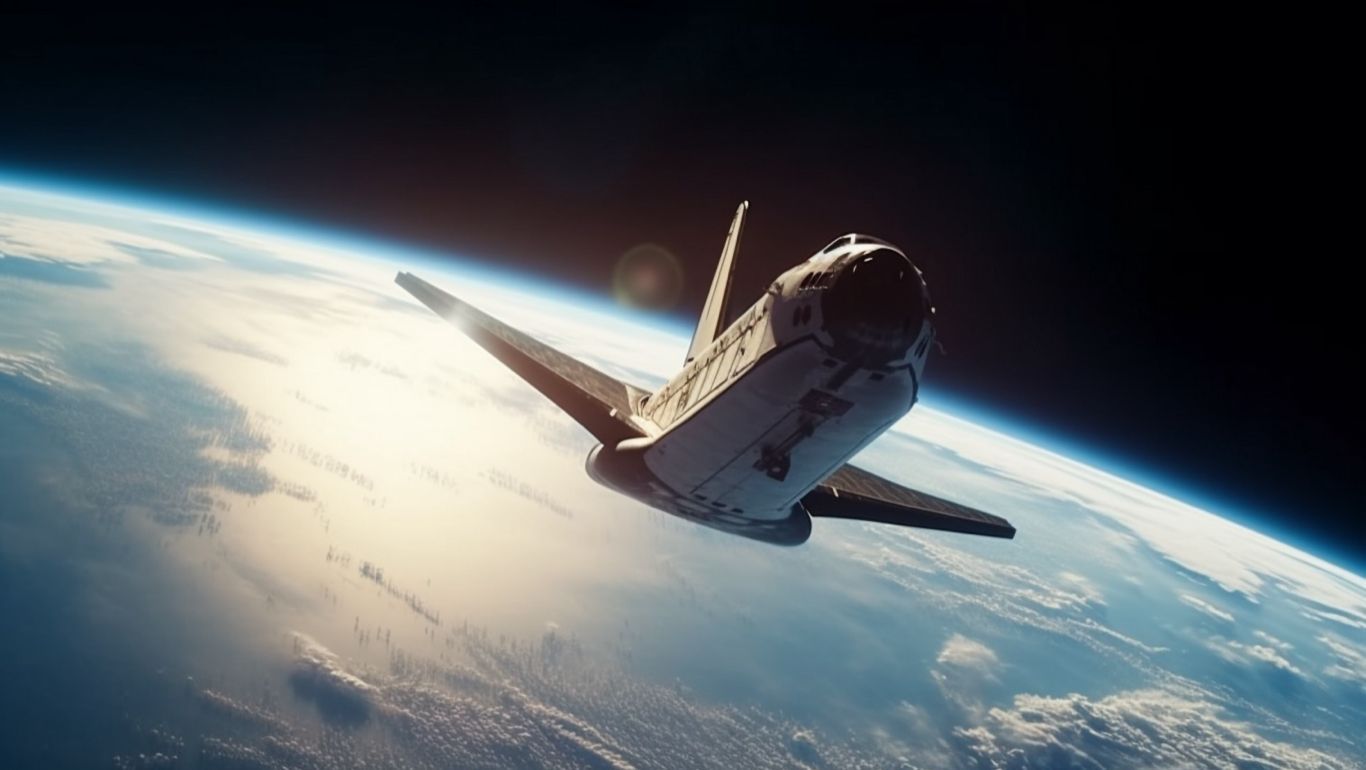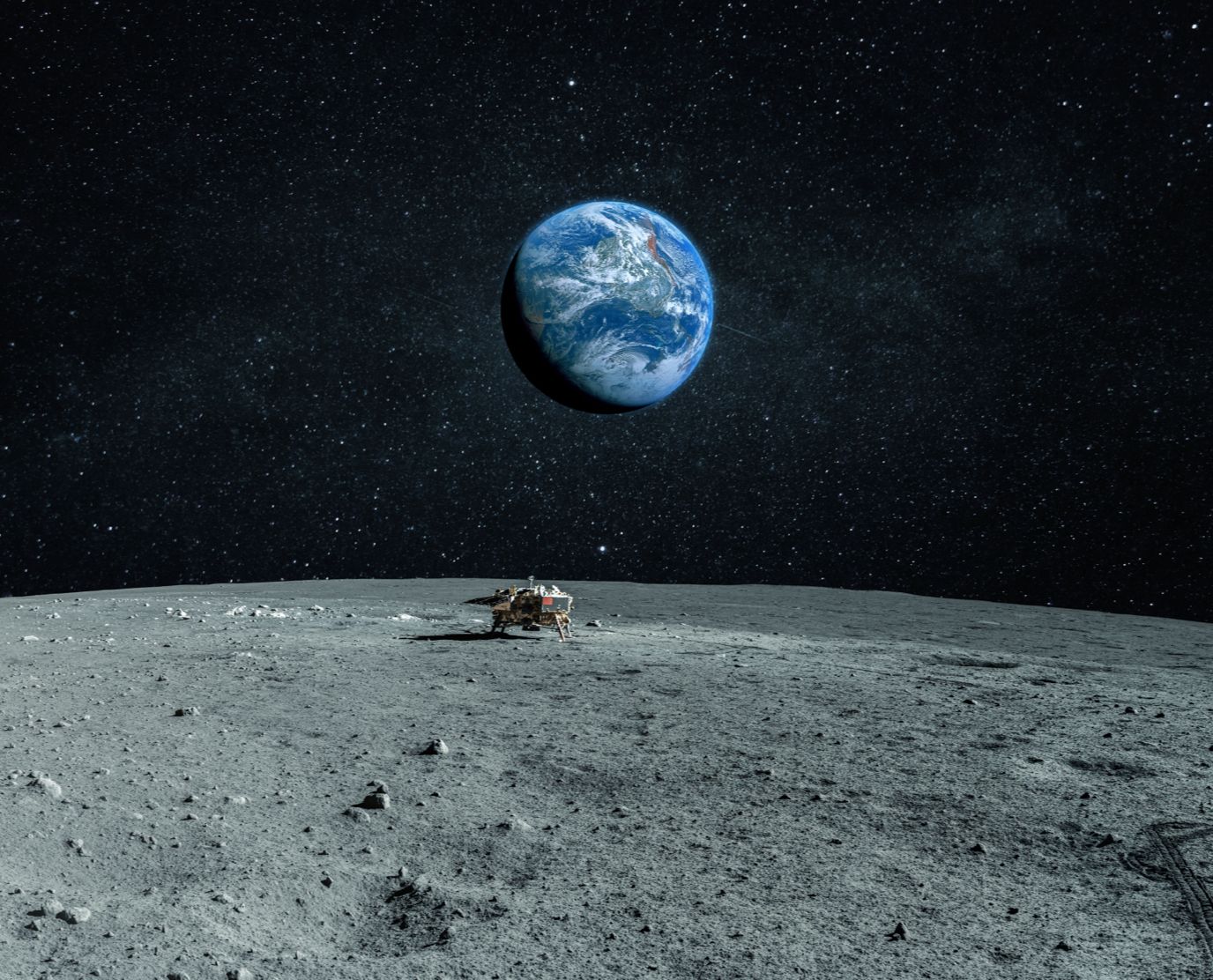15 December 2023

Could US establish exclusion zones around landing sites? (Image - Adobe)
On Tuesday, December 12, the US oversight and investigation subcommittee of the House Natural Resources Committee engaged in a discussion, which may prove to be another milestone in the human quest for space mining and retrieving off-world resources.
In what is described to have turned into a partisan debate, voices were heard in both support of the need for off-world mining, and those who questioned its efficacy .
Eric Sundby, executive director of the Space Force Association, said that “Humanity stands on a precipice of a new era, one that will be defined by space development and utilization of space resources.” Rep. Paul Gosar even stressed the importance of off world resources in future, saying that “space mining is more and more a necessity.”
Sourcing space-based resources such as rare-earth materials, required for humanity’s increasing thirst for tech products, as well as the potential of the energy-rich resource, Helium-3, may be what is driving a new lunar race at the moment.
A sense of urgency may also be fuelled by the perceived threat of a race with China, as well as a desire to reduce dependancy on Chinese rare earths. In September the head of NASA, Bill Nelson, sated that the US is "in a space race with China to go back to the moon”, and last year voiced fears that China’s intention may be to land on the Moon and say 'It's ours now and you stay out’.
Exclusion zones as means to secure lunar territory?
Indeed there could be a race unfolding in order to secure finite areas of the Moon that are rich with resources, but it also raises the issue of legality surrounding the appropriation of lunar territory.
The UN Outer Space Treaty (OST), one piece of legislation that all the leading space powers are signatories to, states that “the moon and other celestial bodies, is not subject to national appropriation by claim of sovereignty, by means of use or occupation, or by any other means.” This would mean that both the US and China are simply not allowed to claim any territories as their own.
However, US space law professor and lawyer, Michelle Hanlon, presented the idea of “exclusion zones’ as a means of securing areas of the Moon. Her argument is that notion of “due regard”, outlined in the OST, would allow for exclusion zones to be established wherever a spacecraft may land, and could therefore be used as a means to circumnavigate the problem of territorial appropriation, and secure areas of the Moon.
She continued to add that “we must accelerate our efforts to assure continued access to extraterrestrial resources.” The idea of using “safety zones” is also enshrined in the Artemis Accords, the US-led regulatory framework for activities in outer space.
Discussion comes at a turning point for off-world mining
This discussion also comes a critical moment for the US, as DARPA only last week announced their LuNa-10 project, designed to establish the rapid development of a commercial lunar infrastructure, inviting 14 companies, such as SpaceX, Blue Origin and Firefly Aerospace, to join their study.
The subcommittee also discussed the developments of Astroforge (US), a startup with the specific aim of mining resources from asteroids. While the company have this week noted problems with their first demonstration mission, Brokkr-1, they are still going ahead with their second demonstration, named Odin, which will relay with an asteroid. The mission is due to launch as a payload on Intuitive Machines (US) IM-2 mission next year.
Not all support or share a prosperous vision of space mining, and many would question how long it will take to make the industry viable, and how much public money it would require, particularly during a time when NASA faces potential budget constraints.
It may therefore become the increasing responsibility of the private sector to increase access and lower barriers to off-world resource mining, such in the way that SpaceX has done with space-launch and transportation.

US and China developing secretive spaceplanes (Image - Adobe)
Chinese reusable launch vehicles and secretive spaceplanes
A separate race also seems to be unfolding, seen through the Chinese effort to attain the same level of efficiency and affordability in commercial space-launch that has been exemplified by SpaceX over the last 15 years, achieved through the success of reusability.
On December 8 private Chinese launch startup, Landspace, successfully launched its payload of satellites into orbit for the first time, using their Zhuque-2 rocket. They plan to build on this success and increase their launch rate to three in 2024, six in 2025 and and twelve in 2026.
The company also announced more details of their upcoming stainless steel rocket, the Zhuque-3, set for debut in 2025. It will feature a recordable first stage, with each vehicle designed to be reused up to twenty times.
In addition, Chinese startup i-Space (Beijing Interstellar Glory Space Technology Co) on December 10 successfully demonstrated the vertical take-off and vertical landing of their Hyperbola-2 rocket; the first reusable flight of a reusable rocket in China. The demonstration also used a rocket previously used only 38 days previous.
While they are still same way off SpaceX, and have yet to reach orbit, Chinese commercial space-launch has come a long way in 2023.
US and China launch secretive spaceplanes
It was also this week reported that the US are again looking to launch their secretive spaceplane, the X-37B. The vehicle, much like smaller version of the shuttle, first launched over a decade ago, with little known about it’s function.
However, the US Space Force did announce that this mission will be “experimenting with space domain awareness technologies and investigating the radiation effects to NASA materials.” Focussing on domain awareness could mean that the reusable vehicle may be used to monitor activities of other satellites and maintain US surveillance in-orbit.
In the same week, coincidentally or not, China announced that they also launched their own “reusable test spacecraft,” according to Chinese media outlet, Xinhua.
The report also stated that “During this period, reusable technology verification and space science experiments will be carried out as planned to provide technical support for the peaceful use of space,” but little or no other details or images of the vehicle have been released.
It previously completed its second mission in May after spending 276 days in-orbit, with U.S. Space Force tracking data revealing that it released a small satellite that stayed in close proximity to the vehicle.
Brian Weeden, Director of Program Planning at the Secure World Foundation, told SpaceNews that “Based on what little information we have, I think the Shenlong (Chinese spaceplane) and the X-37B are likely doing many of the same missions,” reflecting the overall situation between the two space superpowers.
The new space race is gathering momentum, whether in the quest to secure lucrative of-world mining sites, to develop efficient and reusable launch technology or with in-orbit surveillance. With China closing the gap on the US in space, we don’t expect the pace to slow down any time soon.
Our future in space

Could US establish exclusion zones around landing sites? (Image - Adobe)
15 December 2023
US House Committee Discusses Space Mining, Chinese Commercial Rockets, and the Race for Secretive Spaceplanes - Space News Roundup
On Tuesday, December 12, the US oversight and investigation subcommittee of the House Natural Resources Committee engaged in a discussion, which may prove to be another milestone in the human quest for space mining and retrieving off-world resources.
In what is described to have turned into a partisan debate, voices were heard in both support of the need for off-world mining, and those who questioned its efficacy .
Eric Sundby, executive director of the Space Force Association, said that “Humanity stands on a precipice of a new era, one that will be defined by space development and utilization of space resources.” Rep. Paul Gosar even stressed the importance of off world resources in future, saying that “space mining is more and more a necessity.”
Sourcing space-based resources such as rare-earth materials, required for humanity’s increasing thirst for tech products, as well as the potential of the energy-rich resource, Helium-3, may be what is driving a new lunar race at the moment.
A sense of urgency may also be fuelled by the perceived threat of a race with China, as well as a desire to reduce dependancy on Chinese rare earths. In September the head of NASA, Bill Nelson, sated that the US is "in a space race with China to go back to the moon”, and last year voiced fears that China’s intention may be to land on the Moon and say 'It's ours now and you stay out’.
Exclusion zones as means to secure lunar territory?
Indeed there could be a race unfolding in order to secure finite areas of the Moon that are rich with resources, but it also raises the issue of legality surrounding the appropriation of lunar territory.
The UN Outer Space Treaty (OST), one piece of legislation that all the leading space powers are signatories to, states that “the moon and other celestial bodies, is not subject to national appropriation by claim of sovereignty, by means of use or occupation, or by any other means.” This would mean that both the US and China are simply not allowed to claim any territories as their own.
However, US space law professor and lawyer, Michelle Hanlon, presented the idea of “exclusion zones’ as a means of securing areas of the Moon. Her argument is that notion of “due regard”, outlined in the OST, would allow for exclusion zones to be established wherever a spacecraft may land, and could therefore be used as a means to circumnavigate the problem of territorial appropriation, and secure areas of the Moon.
She continued to add that “we must accelerate our efforts to assure continued access to extraterrestrial resources.” The idea of using “safety zones” is also enshrined in the Artemis Accords, the US-led regulatory framework for activities in outer space.
Discussion comes at a turning point for off-world mining
This discussion also comes a critical moment for the US, as DARPA only last week announced their LuNa-10 project, designed to establish the rapid development of a commercial lunar infrastructure, inviting 14 companies, such as SpaceX, Blue Origin and Firefly Aerospace, to join their study.
The subcommittee also discussed the developments of Astroforge (US), a startup with the specific aim of mining resources from asteroids. While the company have this week noted problems with their first demonstration mission, Brokkr-1, they are still going ahead with their second demonstration, named Odin, which will relay with an asteroid. The mission is due to launch as a payload on Intuitive Machines (US) IM-2 mission next year.
Not all support or share a prosperous vision of space mining, and many would question how long it will take to make the industry viable, and how much public money it would require, particularly during a time when NASA faces potential budget constraints.
It may therefore become the increasing responsibility of the private sector to increase access and lower barriers to off-world resource mining, such in the way that SpaceX has done with space-launch and transportation.

US and China developing secretive spaceplanes (Image - Adobe)
Chinese reusable launch vehicles and secretive spaceplanes
A separate race also seems to be unfolding, seen through the Chinese effort to attain the same level of efficiency and affordability in commercial space-launch that has been exemplified by SpaceX over the last 15 years, achieved through the success of reusability.
On December 8 private Chinese launch startup, Landspace, successfully launched its payload of satellites into orbit for the first time, using their Zhuque-2 rocket. They plan to build on this success and increase their launch rate to three in 2024, six in 2025 and and twelve in 2026.
The company also announced more details of their upcoming stainless steel rocket, the Zhuque-3, set for debut in 2025. It will feature a recordable first stage, with each vehicle designed to be reused up to twenty times.
In addition, Chinese startup i-Space (Beijing Interstellar Glory Space Technology Co) on December 10 successfully demonstrated the vertical take-off and vertical landing of their Hyperbola-2 rocket; the first reusable flight of a reusable rocket in China. The demonstration also used a rocket previously used only 38 days previous.
While they are still same way off SpaceX, and have yet to reach orbit, Chinese commercial space-launch has come a long way in 2023.
US and China launch secretive spaceplanes
It was also this week reported that the US are again looking to launch their secretive spaceplane, the X-37B. The vehicle, much like smaller version of the shuttle, first launched over a decade ago, with little known about it’s function.
However, the US Space Force did announce that this mission will be “experimenting with space domain awareness technologies and investigating the radiation effects to NASA materials.” Focussing on domain awareness could mean that the reusable vehicle may be used to monitor activities of other satellites and maintain US surveillance in-orbit.
In the same week, coincidentally or not, China announced that they also launched their own “reusable test spacecraft,” according to Chinese media outlet, Xinhua.
The report also stated that “During this period, reusable technology verification and space science experiments will be carried out as planned to provide technical support for the peaceful use of space,” but little or no other details or images of the vehicle have been released.
It previously completed its second mission in May after spending 276 days in-orbit, with U.S. Space Force tracking data revealing that it released a small satellite that stayed in close proximity to the vehicle.
Brian Weeden, Director of Program Planning at the Secure World Foundation, told SpaceNews that “Based on what little information we have, I think the Shenlong (Chinese spaceplane) and the X-37B are likely doing many of the same missions,” reflecting the overall situation between the two space superpowers.
The new space race is gathering momentum, whether in the quest to secure lucrative of-world mining sites, to develop efficient and reusable launch technology or with in-orbit surveillance. With China closing the gap on the US in space, we don’t expect the pace to slow down any time soon.
Share this article
15 December 2023
US House Committee Discusses Space Mining, Chinese Commercial Rockets, and the Race for Secretive Spaceplanes- Space News Roundup

Could US establish exclusion zones around landing sites? (Image - Adobe)
On Tuesday, December 12, the US oversight and investigation subcommittee of the House Natural Resources Committee engaged in a discussion, which may prove to be another milestone in the human quest for space mining and retrieving off-world resources.
In what is described to have turned into a partisan debate, voices were heard in both support of the need for off-world mining, and those who questioned its efficacy .
Eric Sundby, executive director of the Space Force Association, said that “Humanity stands on a precipice of a new era, one that will be defined by space development and utilization of space resources.” Rep. Paul Gosar even stressed the importance of off world resources in future, saying that “space mining is more and more a necessity.”
Sourcing space-based resources such as rare-earth materials, required for humanity’s increasing thirst for tech products, as well as the potential of the energy-rich resource, Helium-3, may be what is driving a new lunar race at the moment.
A sense of urgency may also be fuelled by the perceived threat of a race with China, as well as a desire to reduce dependancy on Chinese rare earths. In September the head of NASA, Bill Nelson, sated that the US is "in a space race with China to go back to the moon”, and last year voiced fears that China’s intention may be to land and the Moon and say 'It's ours now and you stay out’.
Exclusion zones as means to secure lunar territory?
Indeed there could be a race unfolding in order to secure finite areas of the Moon that are rich with resources, but it also raises the issue of legality surrounding the appropriation of lunar territory.
The UN Outer Space Treaty (OST), one piece of legislation that all the leading space powers are signatories to, states that “the moon and other celestial bodies, is not subject to national appropriation by claim of sovereignty, by means of use or occupation, or by any other means.” This would mean that both the US and China are simply not allowed to claim any territories as their own.
However, US space law professor and lawyer, Michelle Hanlon, presented the idea of “exclusion zones’ as a means of securing areas of the Moon. Her argument is that notion of “due regard”, outlined in the OST, would allow for exclusion zones to be established wherever a spacecraft may land, and could therefore be used as a means to circumnavigate the problem of territorial appropriation, and secure areas of the Moon.
She continued to add that “we must accelerate our efforts to assure continued access to extraterrestrial resources.” The idea of using “safety zones” is also enshrined in the Artemis Accords, the US-led regulatory framework for activities in outer space.
Discussion comes at a turning point for off-world mining
This discussion also comes a critical moment for the US, as DARPA only last week announced their LuNa-10 project, designed to establish the rapid development of a commercial lunar infrastructure, inviting 14 companies, such as SpaceX, Blue Origin and Firefly Aerospace, to join their study.
The subcommittee also discussed the developments of Astroforge (US), a startup with the specific aim of mining resources from asteroids. While the company have this week noted problems with their first demonstration mission, Brokkr-1, they are still going ahead with their second demonstration, named Odin, which will relay with an asteroid. The mission is due to launch as a payload on Intuitive Machines (US) IM-2 mission next year.
Not all support or share a prosperous vision of space mining, and many would question how long it will take to make the industry viable, and how much public money it would require, particularly during a time when NASA faces potential budget constraints.
It may therefore become the increasing responsibility of the private sector to increase access and lower barriers to off-world resource mining, such in the way that SpaceX has done with space-launch and transportation.

US and China developing secretive spaceplanes (Image - Adobe)
Chinese reusable launch vehicles and secretive spaceplanes
A separate race also seems to be unfolding, seen through the Chinese effort to attain the same level of efficiency and affordability in commercial space-launch that has been exemplified by SpaceX over the last 15 years, achieved through the success of reusability.
On December 8 private Chinese launch startup, Landspace, successfully launched its payload of satellites into orbit for the first time, using their Zhuque-2 rocket. They plan to build on this success and increase their launch rate to three in 2024, six in 2025 and and twelve in 2026.
The company also announced more details of their upcoming stainless steel rocket, the Zhuque-3, set for debut in 2025. It will feature a recordable first stage, with each vehicle designed to be reused up to twenty times.
In addition, Chinese startup i-Space (Beijing Interstellar Glory Space Technology Co) on December 10 successfully demonstrated the vertical take-off and vertical landing of their Hyperbola-2 rocket; the first reusable flight of a reusable rocket in China. The demonstration also used a rocket previously used only 38 days previous.
While they are still same way off SpaceX, and have yet to reach orbit, Chinese commercial space-launch has come a long way in 2023.
US and China launch secretive spaceplanes
It was also this week reported that the US are again looking to launch their secretive spaceplane, the X-37B. The vehicle, much like smaller version of the shuttle, first launched over a decade ago, with little known about it’s function.
However, the US Space Force did announce that this mission will be “experimenting with space domain awareness technologies and investigating the radiation effects to NASA materials.” Focussing on domain awareness could mean that the reusable vehicle may be used to monitor activities of other satellites and maintain US surveillance in-orbit.
In the same week, coincidentally or not, China announced that they also launched their own “reusable test spacecraft,” according to Chinese media outlet, Xinhua.
The report also stated that “During this period, reusable technology verification and space science experiments will be carried out as planned to provide technical support for the peaceful use of space,” but little or no other details or imagfes of the vehicle have been released.
It previously completed its second mission in May after spending 276 days in-orbit, with U.S. Space Force tracking data revealing that it released a small satellite that stayed in close proximity to the vehicle.
Brian Weeden, Director of Program Planning at the Secure World Foundation, told SpaceNews that “Based on what little information we have, I think the Shenlong (Chinese spaceplane) and the X-37B are likely doing many of the same missions,” reflecting the overall situation between the two space superpowers.
The new space race is gathering momentum, whether in the quest to secure lucrative of-world mining sites, to develop efficient and reusable launch technology or with in-orbit surveillance. With China closing the gap on the US in space, we don’t expect the pace to slow down any time soon.
Share this article
External Links
This Week
*News articles posted here are not property of ANASDA GmbH and belong to their respected owners. Postings here are external links only.






